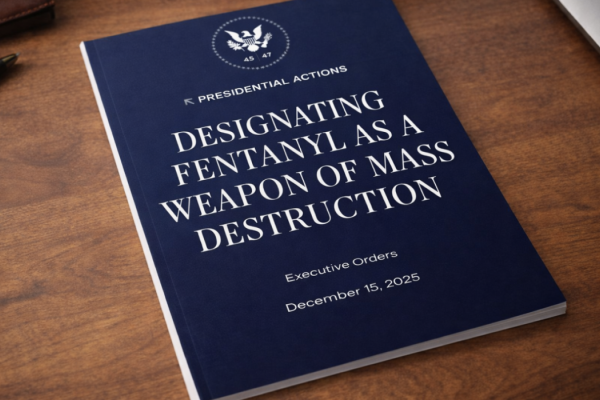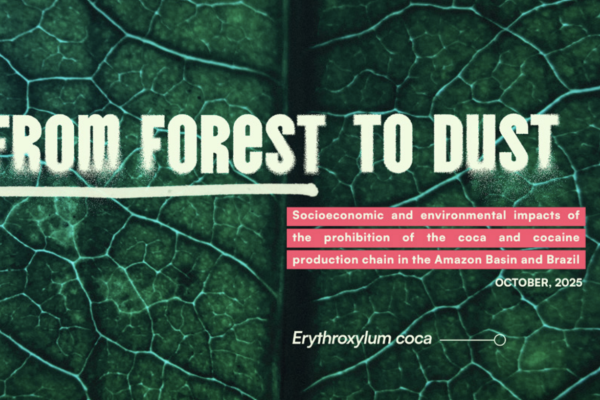5th September 2023
Despite the billions spent annually on punitive enforcement in an attempt to deter drug use, and the concept of deterrence sitting at the heart of UK and global drug enforcement thinking, it is now clear there is little or no meaningful deterrent effect from arresting, criminalising or punishing people who use drugs.
As long ago as 2006, the UK’s Science and Technology Select Committee found “no solid evidence to support the existence of a deterrent effect, despite the fact that it appears to underpin the Government’s policy on classification [1].” The UK Government responded that it “accepts that there is an absence of conclusive evidence [2].” Despite the threat of criminalisation people still use drugs - in the UK, three million people did so last year [3].
In the nearly two decades since that committee report, no such evidence has emerged, despite the Home Office’s commitment to “consider ways in which the evidence base in the context of the deterrent effect can be strengthened [4].”
In fact, the UK Home Office’s 2014 report “Drugs: international comparators” which sought to correct this absence of evidence, instead concluded that “Looking across different countries there is no apparent correlation between the toughness of a country’s approach and the prevalence of adult drug use [5].” The most recent evaluation of the UK’s drugs strategy noted: “there is, in general, a lack of robust evidence as to whether capture and punishment serves as a deterrent for drug use [6].”
While it is easy to find cherry picked examples to support a given position, where analysis has looked at data globally there is no evidence of a clear pattern. This is something both the European Monitoring Centre for Drugs and Drug Addiction (EMCDDA) [7] and the World Health Organization (WHO) have found. In the WHO’s study of 17 countries, it concluded, much like the Home Office findings: “... countries with stringent user-level illegal drug policies did not have lower levels of use than countries with liberal ones [8].”
Relatedly, the global evidence suggests that removing criminal penalties does not lead to increased use. The UK Government’s own Advisory Council on the Misuse of Drugs has noted that “peer-reviewed studies have not [emphasis added] found that removing criminal penalties for possession is associated with higher rates of drug use [9].” Most recently, a study of cannabis use among over 100,000 teenagers in 38 countries found no direct association between policy liberalisation and levels of use [10].
Why is there no significant deterrent effect from criminalising people who use drugs?
Other factors are better predictors of drug use than the severity and certainty of punishment, a finding that matches with survey results showing people who don’t use drugs are more likely to cite a lack of interest or a concern about health effects, rather than a fear of legal sanctions, as the main reasons they do not use drugs [11].
Fear of legal sanction also plays virtually no role in motivating people to stop using illegal drugs: the 2015 Global Drug Survey found that worries about getting caught by police were cited by only 3% of those who stopped taking cannabis and 2% of those who stopped using cocaine or MDMA [12].
People choose whether or not to take drugs for a range of reasons, relating to peer use, socio-economic factors, informal social controls, pleasure seeking, and/or dealing with physical or psychological pain or trauma. Indeed, potential pleasure seeking or pain relief is typically a far more important consideration than any potential punishment or penalties.
This is because most of us are disposed to what is called ‘present oriented behaviour’, i.e. the perceived gains of taking drugs carry far more weight because they are immediate and (relatively) certain. Whereas the legal sanctions for such behaviour are likely to be applied at a much later date, and in most cases are unlikely to be applied at all.
Although many countries do arrest large numbers of people who use drugs, they are, in relative terms, only a small proportion of the total drug-using population. Data from several Western countries indicates that, throughout the mid- to late 1990s, the probability of being arrested for cannabis possession in a given year was between 1% and 3% (and that skewed towards particular communities), making the chance of arrest for any one incident of drug use vanishingly low [13].
But what about threatening people with ever harsher penalties? Emphasising the flaw of “tough on drugs” rhetoric, in his review of deterrence studies, Paternoster concludes: “perceived severity plays virtually no role in explaining deviant/criminal conduct [14].”
While the speed and certainty with which punishment will be applied is marginally more important than the severity of punishment, how could the chances of catching people in possession of small, easily concealable quantities of drugs, even with the most aggressive enforcement approach, be increased to sufficiently high levels?
In the UK there were 7.5 stop and searches (most for drugs) for every 1,000 white people, compared with 52.6 for every 1,000 Black people in England and Wales in 2022 [15]. Yet there is no suggestion even this 7-fold disparity in enforcement has significantly reduced drug use in impacted groups, with levels of use remaining similar in Black and white populations.
With no drugs found in three-quarters of searches, to detect enough law-breakers to meaningfully deter use (whatever that, as-yet never reached, threshold might be), surveillance and searches of law-abiding people would have to be scaled up to genuinely disruptive levels, putting an impossible burden on police and courts, and involving unprecedented infringements on civil liberties. Indeed, in the UK, excessive use of stop and search is already harming police and community relations.
For an in-depth look at the issue of drug use and decriminalisation of drug possession for personal use, or legalisation and regulation of drug use, production and supply see ‘Will drug use rise? Exploring a key concern about decriminalising or regulating drugs’.
References
1. House of Commons Science and Technology Committee (2006). Drug classification: making a hash of it?. p.36 https://publications.parliamen...
2. Home Office (2006), Drug classification: making a hash of it? the Government reply to the fifth report from the House of Commons Science and Technology Committee, session 2005-06 HC 1031. p.18. https://www.gov.uk/government/...
3. Office for National Statistics (2022), Drug Misuse in England and Wales: Year ending June 2022 https://www.ons.gov.uk/peoplepopulationandcommunity/crimeandjustice/articles/drugmisuseinenglandandwales/yearendingjune2022
4. Home Office (2006), Drug Classification: making a hash of it? The Government reply. p.18.
5. Home Office (2011). Drugs: international comparators. p.51 https://www.gov.uk/government/...
6. HM Government (2017), An evaluation of the Government’s Drug Strategy 2010. p.10. https://assets.publishing.service.gov.uk/government/uploads/system/uploads/attachment_data/file/628100/Drug_Strategy_Evaluation.PDF
7. EMCDDA (2011). Annual Report: The state of the drugs problem in Europe. p.45 https://www.emcdda.europa.eu/s...; Degenhardt L. et al. (2008). Toward a Global View of Alcohol, Tobacco, Cannabis, and Cocaine Use: Findings from the WHO World Mental Health Surveys. PLOS Medicine 5(7). https://journals.plos.org/plos...;
8. Degenhardt, L., Chiu, W-T., Sampson, N., Kessler, R.C., Anthony, J.C., Angermeyer, M. et al. (2008) ‘Toward a Global View of Alcohol, Tobacco, Cannabis, and Cocaine Use: Findings from the WHO World Mental Health Surveys’, PLoS Medicine, vol. 5, no. 7. http://journals.plos.org/plosmedicine/article?id=10.1371/journal.pmed.0050141
9. Advisory Council on the Misuse of Drugs (2016). 2016 Drug Strategy: ACMD comments. Available at: https://assets.publishing.service.gov.uk/government/uploads/system/uploads/attachment_data/file/627980/ACMD_Drug_Strategy_Response__2016__1_Feb_2016.pdf
10. Stevens, A. (2019). Is policy ‘liberalization’ associated with higher odds of adolescent cannabis use? A re-analysis of data from 38 countries. International Journal of Drug Policy, 66, pp. 94-99
11. For a fully referenced in depth look at these issues see: ‘Will drug use rise? Exploring a key concern about decriminalising or regulating drugs’, Transform, 2016. https://transformdrugs.org/publications/will-drug-use-rise-exploring-a-key-concern-about-decriminalising-or-regulating-drugs
12. Pegg, D. (2015) ‘Global Drug Survey 2015 shows more people buying online than ever before’, The Guardian, 08.06.15. http://www.theguardian.com/society/datablog/2015/jun/08/globaldrug-survey-2015-buy-online-darknet-silk-road
13. Kilmer, B., Caulkins, J.P, Pacula, R.L, MacCoun, R. and Reuter, P. (2010) Altered State? Assessing How Marijuana Legalization in California Could Influence Marijuana Consumption and Public Budgets, RAND Drug Policy Research Center. http://www.rand.org/content/dam/rand/pubs/occasional_papers/2010/RAND_OP315.pdf
14. Paternoster, R. (1987) ‘The deterrent effect of the perceived certainty and severity of punishment: a review of the evidence and issues’, Justice Quarterly, vol. 4, no. 2. http://www.tandfonline.com/doi/abs/10.1080/07418828700089271
15. UK Home Office, ‘Stop and search’, Published 27 May 2022 https://www.ethnicity-facts-fi...




